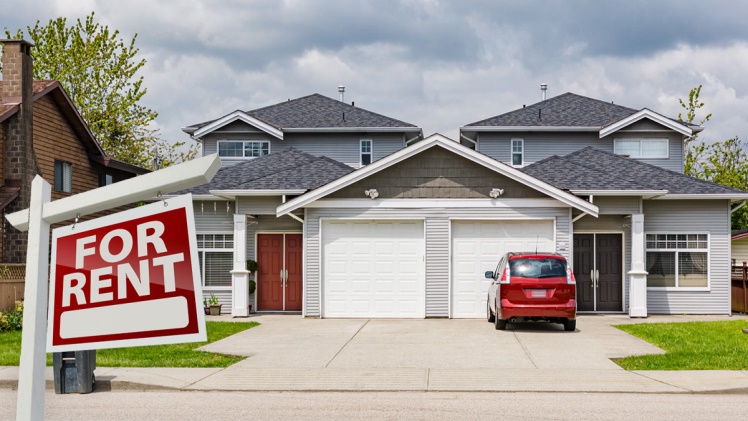Introduction
As an aspiring real estate investor, one of the critical decisions you’ll face is whether to invest in single-family properties or multifamily rental properties. Both options have their advantages and disadvantages, and understanding them can help you make an informed investment choice that aligns with your financial goals and risk tolerance. The estate tax is a form of tax imposed on the transfer of wealth from a deceased person to their heirs or beneficiaries.
Understanding Single-Family Rental Properties
What are Single-Family Rental Properties?
Single-family rental properties are standalone homes or properties designed to accommodate a single family. These properties typically consist of houses, townhouses, or condominiums and are intended for use by a single tenant or family unit.
Pros of Investing in Single-Family Rental Properties
- Easier Entry: Single-family properties are often more affordable and accessible for individual investors compared to multifamily properties, which generally require a higher initial investment.
- Higher Demand: Single-family homes are usually in high demand, making it easier to find tenants and reduce vacancy periods.
- Tenant Stability: Single-family tenants tend to stay longer, providing more stable rental income and reducing turnover costs.
Cons of Investing in Single-Family Rental Properties
- Limited Rental Income: Since single-family properties accommodate only one tenant, the rental income might be lower compared to multifamily properties with multiple units.
- Dependency on a Single Tenant: Your rental income relies on a single tenant, and if they leave unexpectedly, it could affect your cash flow significantly.
- Lower Cash Flow: The cash flow from single-family properties might be lower due to higher expenses like maintenance, insurance, and property management fees per unit.
Understanding Multifamily Rental Properties
What are Multifamily Rental Properties?
Multifamily rental properties consist of buildings or complexes with multiple units, designed to accommodate multiple families or tenants under one roof. These properties can include duplexes, triplexes, apartment buildings, and condominium complexes.
Pros of Investing in Multifamily Rental Properties
- Higher Rental Income Potential: With multiple units, multifamily properties generate higher rental income, which can lead to stronger cash flow and potentially faster ROI.
- Diversified Risk: With multiple tenants, the risk is spread across different units, reducing the impact of a vacancy or non-payment from a single tenant.
- Economies of Scale: Managing multiple units in one location can lead to cost savings and efficiency in property management and maintenance.
Cons of Investing in Multifamily Rental Properties
- Higher Initial Investment: Multifamily properties generally require a larger upfront investment compared to single-family homes.
- Complex Management: Managing multiple units, handling different tenant needs, and maintaining the property can be more demanding and time-consuming.
- Market Dependence: The success of multifamily properties relies heavily on the local rental market and demand, which may fluctuate over time.
Determining Your Investment Strategy
Assessing Your Financial Situation
Before deciding between single-family and multifamily properties, assess your financial situation and investment goals. Consider factors such as:
- Budget: Determine how much capital you can invest and whether it aligns with the cost of single-family or multifamily properties in your target area.
- Risk Tolerance: Understand your risk tolerance and how comfortable you are with managing a single property or a multi-unit complex.
- Investment Horizon: Clarify your investment horizon and whether you’re looking for short-term gains or long-term appreciation.
Researching the Local Real Estate Market
Conduct thorough research on the local real estate market for both single and multifamily properties. Look at historical trends, rental demand, vacancy rates, and potential appreciation.
Analyzing Potential Cash Flow
Calculate the expected cash flow from each investment option. Consider not only rental income but also expenses such as property taxes, insurance, maintenance, and property management fees.
Weighing Pros and Cons
Consider the advantages and disadvantages of each property type based on your financial assessment and market research. Determine which factors align better with your investment objectives.
Conclusion
Deciding whether to invest in single-family or multifamily rental properties is a crucial choice that can significantly impact your property investment journey. Single-family properties offer simplicity and tenant stability, while multifamily properties provide higher rental income and diversification. Take the time to thoroughly research and evaluate your financial goals, risk tolerance, and local market conditions to make a well-informed decision that aligns with your investment strategy.
FAQs
- Are single-family properties better for beginners?
For beginners, single-family properties are often more manageable due to lower investment costs and simpler management. - Do multifamily properties yield better returns?
Multifamily properties have the potential for higher rental income, leading to stronger cash flow and faster returns in some cases. - Which property type is less risky?
Both property types carry risks, but multifamily properties might offer more risk diversification due to multiple tenants. - Can I invest in multifamily properties with a limited budget?
Yes, it’s possible to invest in multifamily properties with a limited budget by exploring financing options like partnerships or loans. - What role does location play in property investment?
Location is a crucial factor in property investment. A good location can attract higher-quality tenants and contribute to property appreciation over time.
